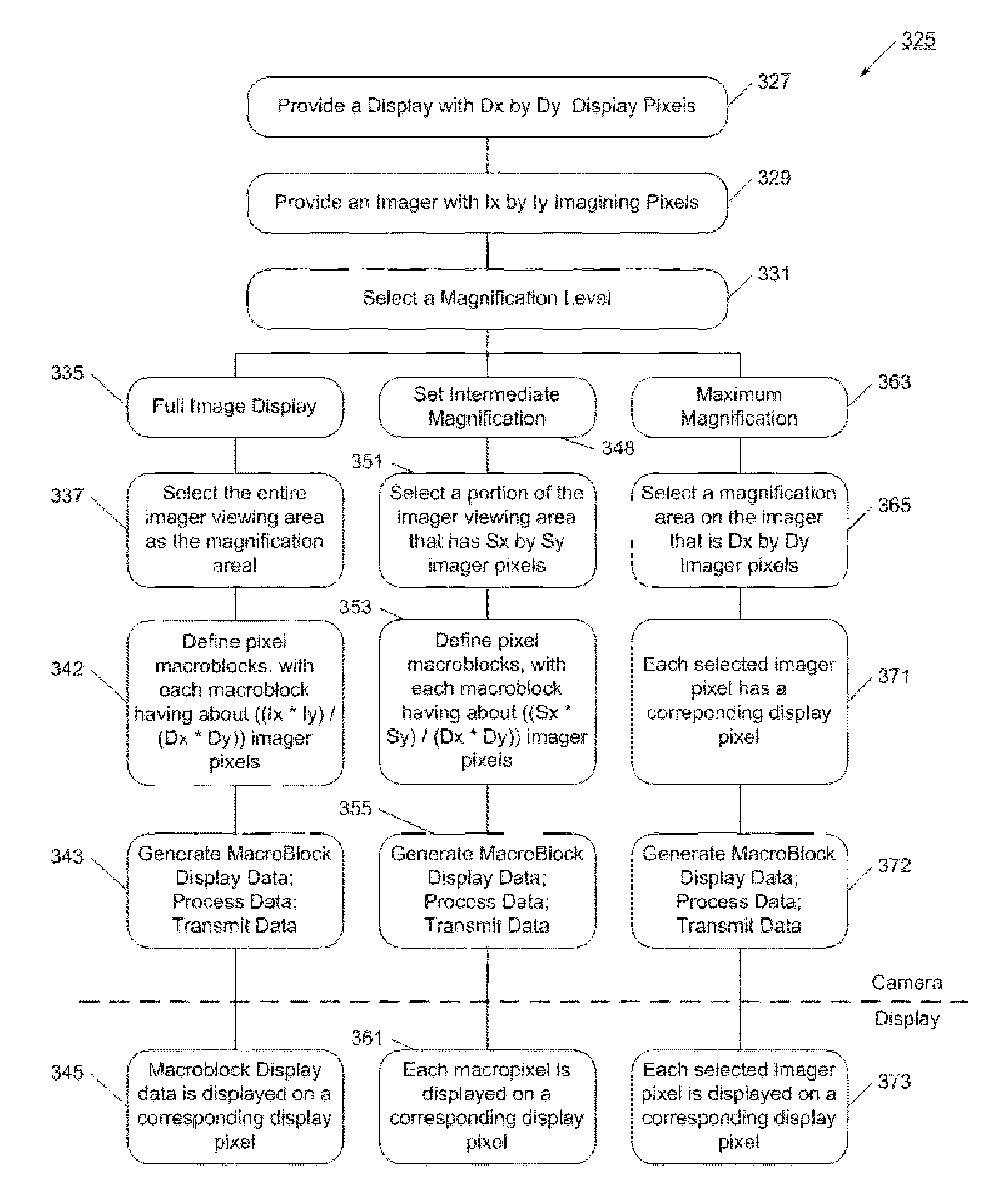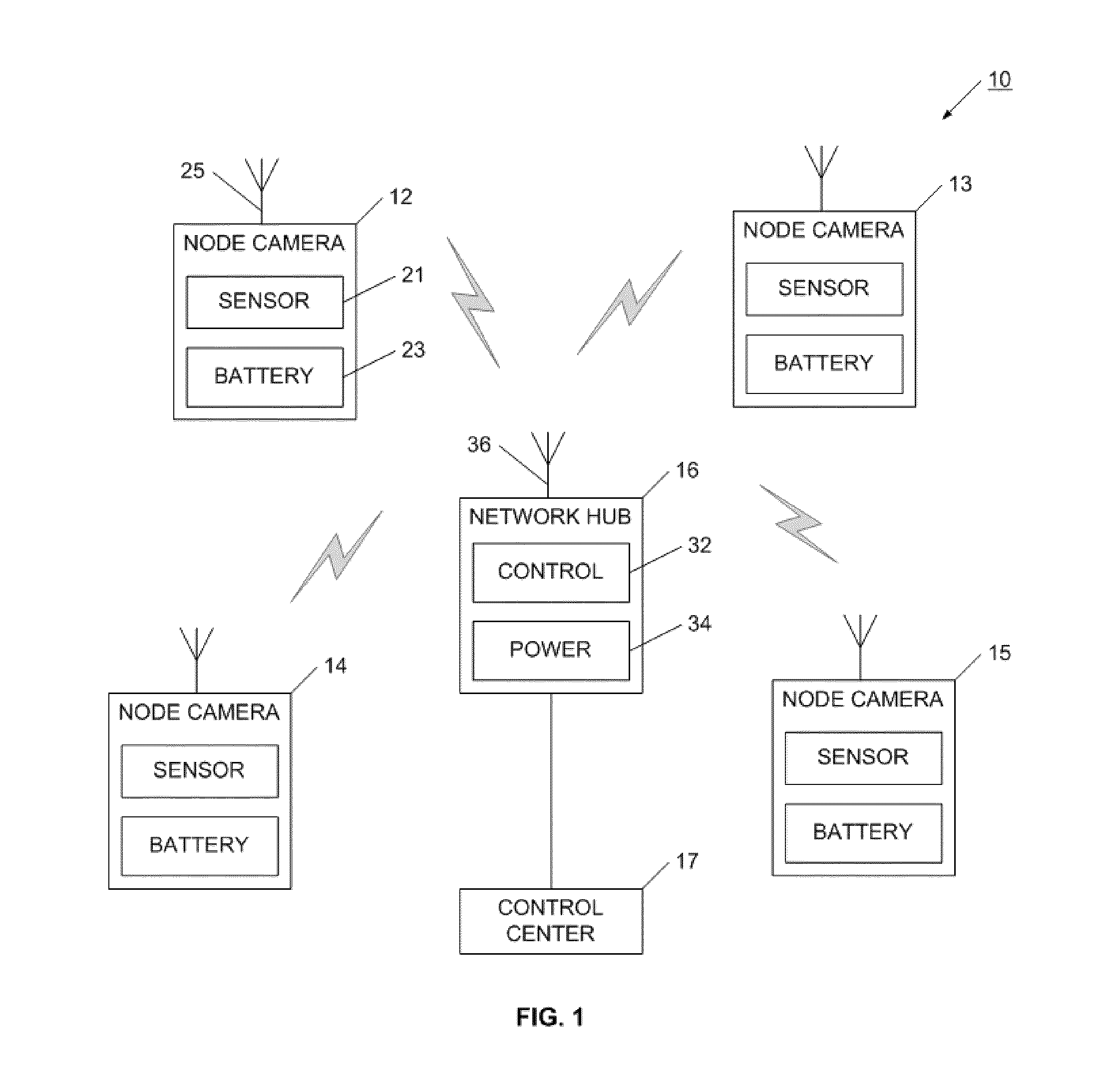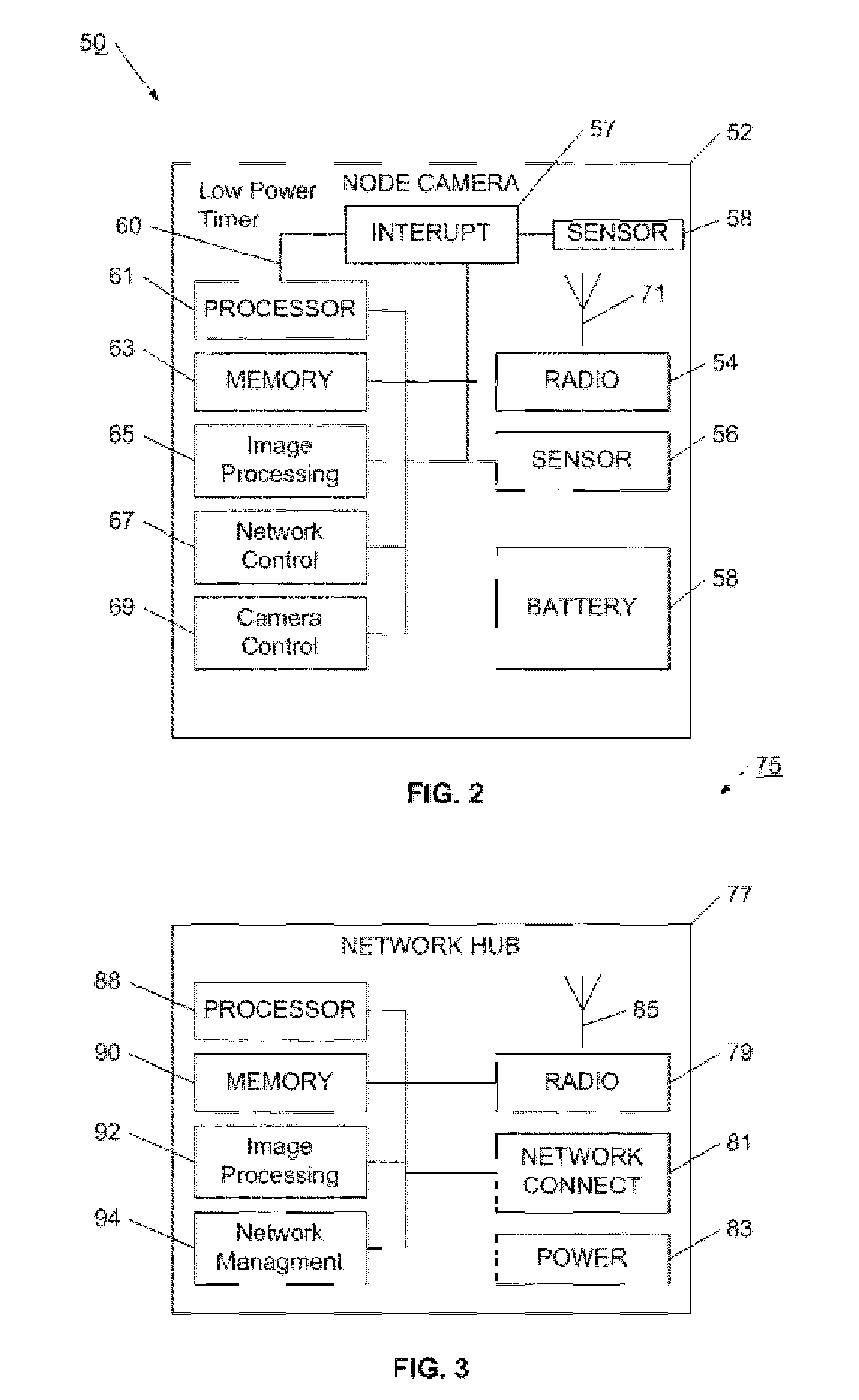Advanced magnification device and method for low-power sensor systems
a technology of low-power sensor and magnification device, which is applied in the field of remote imagers, can solve the problems of high resource and power constraints of devices, and achieve the effects of reducing the number of imager pixels in each macroblock, increasing the magnification level, and improving the optical magnification function
- Summary
- Abstract
- Description
- Claims
- Application Information
AI Technical Summary
Benefits of technology
Problems solved by technology
Method used
Image
Examples
Embodiment Construction
[0027]Referring now to FIG. 1, an advanced magnification system is illustrated in operation on a set of low-power camera sensors. Low-power camera system 10 has a set of node cameras constructed to communicate with network hub 16. More specifically, FIG. 1 shows camera 12, camera 13, camera 14, and camera 15 wirelessly communicating with network hub 16. It will be appreciated that more or fewer cameras may be used, and that node cameras may be provided with different functionality. For example, some node cameras may be constructed to image invisible light, while others may be configured to monitor other wavelengths or to have sensors for detecting other activities. Although low-power camera sensor system 10 is described using visible light and image sensors, it will be appreciated that other types of sensors may be used.
[0028]For example, the sensors may provide acoustic, seismic, spectral, vibration, or other types of information. Each of the node cameras in low-power sensor system...
PUM
 Login to View More
Login to View More Abstract
Description
Claims
Application Information
 Login to View More
Login to View More - R&D
- Intellectual Property
- Life Sciences
- Materials
- Tech Scout
- Unparalleled Data Quality
- Higher Quality Content
- 60% Fewer Hallucinations
Browse by: Latest US Patents, China's latest patents, Technical Efficacy Thesaurus, Application Domain, Technology Topic, Popular Technical Reports.
© 2025 PatSnap. All rights reserved.Legal|Privacy policy|Modern Slavery Act Transparency Statement|Sitemap|About US| Contact US: help@patsnap.com



